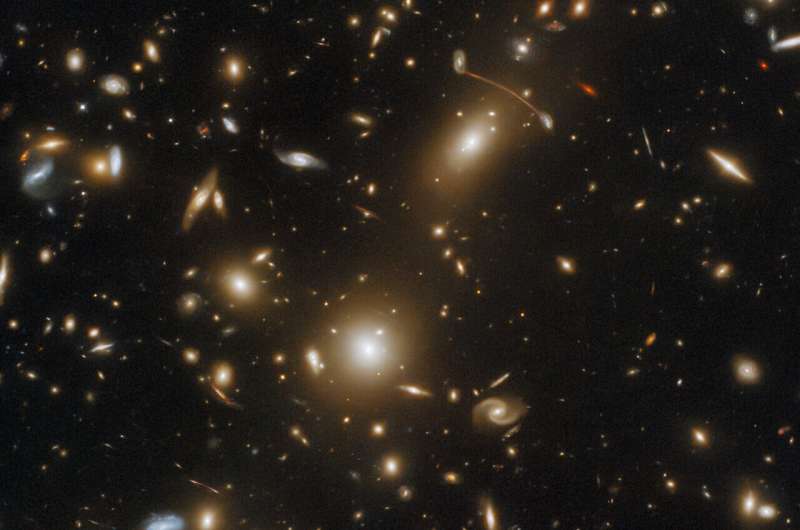#Hubble captures a galactic menagerie

Table of Contents
“Hubble captures a galactic menagerie”

The NASA/ESA Hubble Space Telescope captured this massive galaxy cluster, called Abell 1351, with its Wide Field Camera 3 and Advanced Camera for Surveys. Abell 1351 lies in the constellation Ursa Major in the northern hemisphere.
This image is filled with streaks of light which are actually the images of distant galaxies. The streaks are the result of gravitational lensing, an astrophysical phenomenon that occurs when a massive celestial body such as a galaxy cluster distorts spacetime strongly enough to affect the path of light passing through it, almost as if the light were passing through a gigantic lens. Gravitational lensing comes in two varieties—strong and weak—and both can help astronomers determine the distribution of mass within a lensing galaxy cluster such as Abell 1351.
This observation is part of an astronomical album that holds snapshots of some of the most massive galaxy clusters. This menagerie of massive clusters demonstrates interesting astrophysical phenomena such as strong gravitational lensing, as well as showcasing spectacular examples of violent galaxy evolution. To obtain this astronomical album, astronomers proposed a Snapshot Program.
Snapshot Programs are lists of separate, relatively short exposures that are slotted into gaps between longer Hubble observations. Having a large pool of Snapshot candidates to dip into allows Hubble to use every second of observing time possible, maximizing the scientific output of the observatory.
Image: Hubble views a faraway galaxy through a cosmic lens
Citation:
Image: Hubble captures a galactic menagerie (2022, June 25)
retrieved 26 June 2022
from https://phys.org/news/2022-06-image-hubble-captures-galactic-menagerie.html
This document is subject to copyright. Apart from any fair dealing for the purpose of private study or research, no
part may be reproduced without the written permission. The content is provided for information purposes only.
If you liked the article, do not forget to share it with your friends. Follow us on Google News too, click on the star and choose us from your favorites.
For forums sites go to Forum.BuradaBiliyorum.Com
If you want to read more Like this articles, you can visit our Science category.



